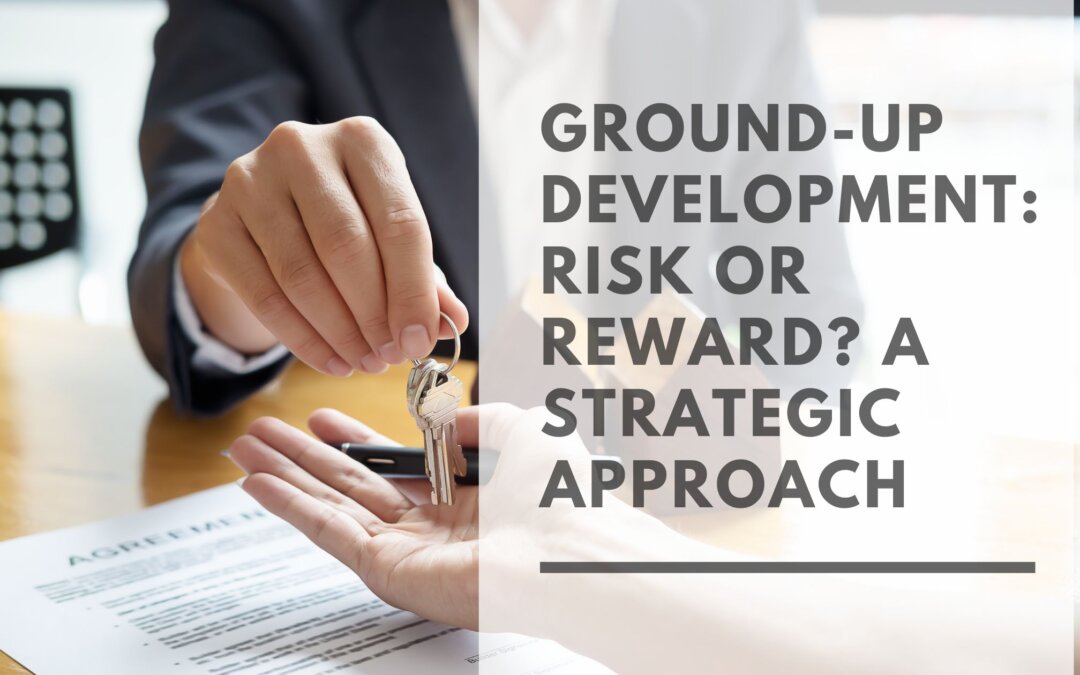Ground-up development is often viewed as one of the most rewarding and ambitious paths in real estate investing. Unlike renovating or repurposing existing structures, this approach starts from an empty lot and ends with a completed, income-producing property. But with high reward potential comes increased complexity and risk. Success hinges on having a strategic approach that manages those risks while positioning the project for long-term returns.
One of the most important considerations in ground-up development is market timing. A project may take two to five years from concept to completion, depending on entitlements, financing, and construction timelines. Developers must forecast market conditions years into the future. Building during a downturn may result in lower costs but risks lower lease-up velocity. Conversely, building in a boom can strain budgets due to labor shortages and rising material costs.
Feasibility analysis is foundational. This includes a deep dive into demographics, job growth, local absorption rates, and comparable property performance. An experienced developer will understand whether the submarket demands multifamily, self-storage, hospitality, or industrial assets and how much square footage can be reasonably absorbed.
Land acquisition is often the first financial commitment. Choosing the right site involves balancing zoning, access to infrastructure, visibility, topography, and neighborhood sentiment. Missteps here can lead to entitlement delays or higher costs later on.
The entitlement process is where many projects stall. Developers must work closely with city planners, neighborhood associations, and legal advisors to navigate zoning codes, environmental impact studies, and design reviews. Projects with strong community support and clear alignment with city master plans move faster and face fewer appeals or delays.
Construction costs are one of the biggest sources of risk. Developers should engage experienced general contractors early and use realistic pro formas that account for contingencies, potential labor shortages, and price volatility in key materials like steel, concrete, and lumber. Design-build models and early contractor involvement (ECI) can help reduce rework and scope changes that inflate costs.
Financing structure is another pillar of success. A blend of equity, mezzanine financing, and senior construction debt is common. Construction lenders want to see a well-capitalized project, experienced team, and realistic timeline. Bridge loans or preferred equity may fill gaps, especially in early phases.
Optionality is increasingly valuable. Designing projects that can accommodate multiple uses or be repurposed over time provides insulation against future market shifts. For example, office buildings with modular floorplates that can convert to residential, or multifamily with street-level retail space, increase long-term adaptability and potential exit opportunities.
Exit strategy must be built into the business plan from day one. Whether the goal is to stabilize and hold, refinance, or sell upon completion, each path has implications for capital structure, lease-up strategy, and risk exposure. Sometimes, market conditions may dictate a pivot—having flexible financial models and investor alignment is key.
Ground-up development is not for the faint of heart. It requires vision, patience, and an ability to manage dozens of moving parts across multiple years. But for those with the experience and discipline, it can offer outsized returns, long-term cash flow, and transformative community impact. With a strategic approach that emphasizes market alignment, thoughtful site selection, proactive entitlement management, and disciplined cost control, developers can navigate the risks and unlock the substantial rewards that ground-up development offers.
